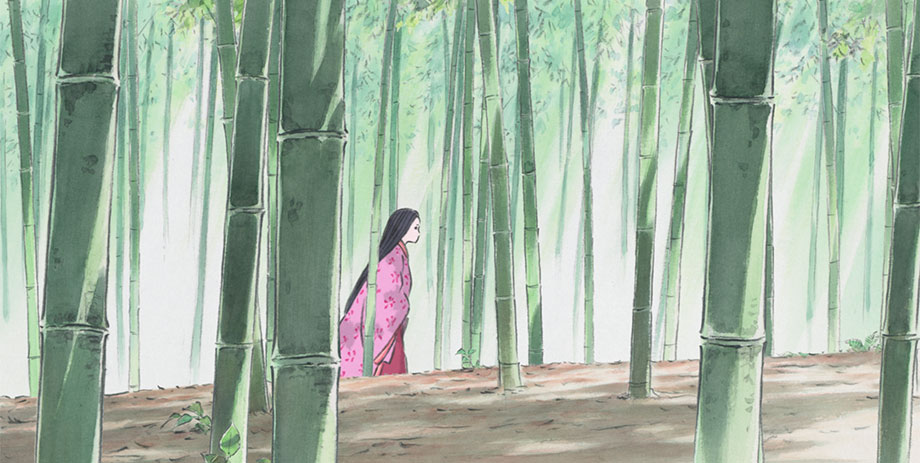TIFF14: The Tale of The Princess Kaguya
Isao Takahata’s The Tale of The Princess Kaguya has the kind of emotional depth and technical mastery that we’ve come to expect from Studio Ghibli. Takahata’s first film in 14 years, The Tale of The Princess Kaguya gives a psychological twist to one of Japan’s oldest written fairy tales. In the fairy tale, an elderly bamboo cutter finds a miniature princess in a bamboo shoot, and decides to raise her and turn her into a princess by moving to the city and wooing the aristocracy. Takahata’s film takes the same trajectory as the fairy tale, one that every Japanese person would be aware of, and broadens its scope and narrative, transforming it into an exploration of freedom and possession in a world of human compulsions.
Unlike with many adaptations of fairy tales, Takahata doesn’t make The Tale of The Princess Kaguya fit a conventional narrative structure. He doesn’t spend much time creating dense narrative motivations for the characters. Instead, he lets each character possess a certain type of psychological predisposition. For example, the bamboo cutter wants his adopted daughter to become a princess and marry a nobleman because he has always assumed the rich and powerful are happy. Conversely, after they take up the guise of nobles, his wife still spends most of her time in her simple kimono working in the garden and on her loom. She’s happiest when busy, so the material aspects of the world don’t concern her much. These people are the same people as they were when they were born. They see the world in a fixed way and society affects them as it does any other person.
Of course, Princess Kaguya is the exception. She wants nothing more than to frolic like the bugs, birds, and beasts, living in the country and spending time with Sutemaru, a boy she fancies. She’s innocent and unshaped by the world. Material wealth has no appeal to her. When her parents take her away to the city, she becomes stoic and sad. She is diligent in her studies, but she resents the type of life they prize.
Kaguya’s repulsion at the world is summed up in one remarkable sequence where she overhears many of her suitors discussing her like a piece of livestock and flees in terror and fury. The animation breaks down to only the most basic lines and shadings as she races away from her mansion, fleeing into the woods and back to her forest home. The film’s animation style is full of soft lines and watercolours. It lacks the detail of most Ghibli films, instead having a more traditional Japanese brush style that emphasizes negative space. It’s gorgeous. So for the bright colours and soft lines to descend into harsh black brush strokes and shifting shades of grey is terrifying.
The Tale of The Princess Kaguya is beautiful and profoundly moving. It is possibly Takahata’s best film since his devastating Grave of the Fireflies. If it does end up being his last film (the 78-year-old Takahata suggested in the Q&A afterwards that he’d love to make another film, but thinks it’s likely he won’t end up being able to), it’s a powerful end to a great career.
9 out of 10
The Tale of The Princess Kaguya (2013, Japan)
Directed by Isao Takahata; written by Isao Takahata and Riko Sakaguchi based off The Tale of the Bamboo Cutter; starring Asi Asakura, Kengo Kora, Takeo Chii, and Nobuko Miyamoto.
The Tale of The Princess Kaguya is playing at the Toronto International Film Festival as part of the Masters programme.
